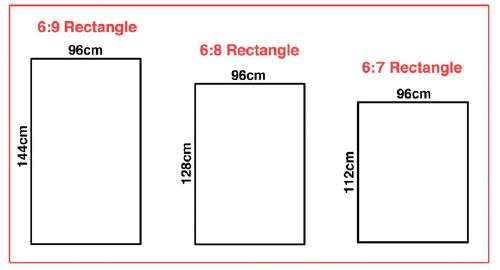August 13, 2013 report
Researchers find clues to explain how people develop geometric abilities

(Medical Xpress)—A team of researchers from Harvard's Psychology Department and Beijing Normal University's State Key Laboratory of Cognitive Neuroscience and Learning, have found differences in the way 4 year old children process geometric concepts. In their paper published in Proceedings of the National Academy of Sciences, the researchers describe geometry experiments conducted with volunteer 4 year old children along with observations and conclusions.
For much of modern history, many thinkers and researchers have sought to explain the nature of geometric understanding in people. Is it innate, for example, or do people learn it somehow. Also, in what ways is it used? Experiments and studies conducted over the years have revealed little about how it happens though it has been shown to be consistent across cultures—children raised in an Amazonian tribe for example, exhibit the same capabilities as those raised in a more modern society who are taught with such tools as a compass and protractor. In this new effort, the researchers sought to determine which sorts of geometric skills 4 year old children use to orient themselves or to distinguish between observable phenomenon.
The researchers ran three different types of experiments. In the first, children were placed inside a rectangular enclosure where they were spun around several times and then asked to find a hidden sticker. In the second, children were asked to look at several pages on a computer screen each of which showed six geometric objects—they were asked to point out which one differed from the others. The third experiment consisted of showing children a printed map of a triangular shaped area for use in locating an object which was sitting in a real triangular enclosure then asking them to find that object.
By making adjustments to the parameters of each experiment such as altering the shape of the rectangular enclosure, the lengths of objects in the computer generated images or removing the angles or walls of the triangular enclosures, the researchers were able to deduce which sort of geometric skills the children were using to accomplish given tasks.
In analyzing their results, the researchers found that the children relied on one of two methods to accomplish different tasks—using distance and direction, or making assumptions based on abstraction of information from angles or length of objects. Those children that were good at using distance and direction, for example, were also good at figuring out how to get themselves to a designated spot, while those that were good at picking out which object was different from others were also good at orienting themselves in an enclosure with no corners.
The results don't explain the nature of geometry in people, of course, but they do help show how it evolves. The next big step will be to explain how it is people develop Euclidean type reasoning in their early teens.
More information: Core foundations of abstract geometry, PNAS, Published online before print August 12, 2013, DOI: 10.1073/pnas.1312640110
Abstract
Human adults from diverse cultures share intuitions about the points, lines, and figures of Euclidean geometry. Do children develop these intuitions by drawing on phylogenetically ancient and developmentally precocious geometric representations that guide their navigation and their analysis of object shape? In what way might these early-arising representations support later-developing Euclidean intuitions? To approach these questions, we investigated the relations among young children's use of geometry in tasks assessing: navigation; visual form analysis; and the interpretation of symbolic, purely geometric maps. Children's navigation depended on the distance and directional relations of the surface layout and predicted their use of a symbolic map with targets designated by surface distances. In contrast, children's analysis of visual forms depended on the size-invariant shape relations of objects and predicted their use of the same map but with targets designated by corner angles. Even though the two map tasks used identical instructions and map displays, children's performance on these tasks showed no evidence of integrated representations of distance and angle. Instead, young children flexibly recruited geometric representations of either navigable layouts or objects to interpret the same spatial symbols. These findings reveal a link between the early-arising geometric representations that humans share with diverse animals and the flexible geometric intuitions that give rise to human knowledge at its highest reaches. Although young children do not appear to integrate core geometric representations, children's use of the abstract geometry in spatial symbols such as maps may provide the earliest clues to the later construction of Euclidean geometry.
© 2013 Medical Xpress


















